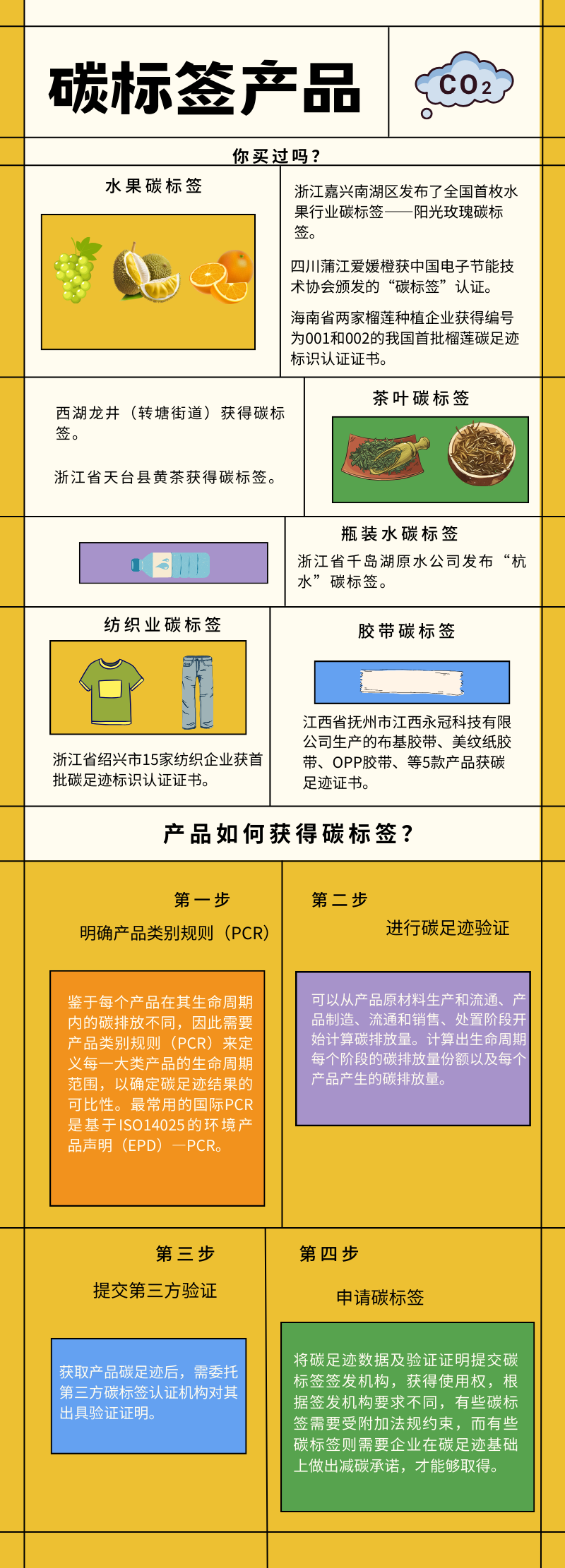This top-level design has "traces" to follow, which are related to you and me 丨 Illustrating new changes in reform ④
A grain of rice, from planting, circulation to consumption; a piece of clothing, a car, from design, production to disposal... every aspect of our daily life is related to "carbon" emissions. Tracking and obtaining accurate total carbon emissions is an objective need to deal with global warming and climate change. Currently, actively promoteBuild and improve carbon footprint managementThe system is becoming a common choice for many countries around the world.
The "Decision of the Central Committee of the Communist Party of China on Further Comprehensively Deepening Reforms and Promoting Chinese-Style Modernization" reviewed and approved by the Third Plenary Session of the 20th Central Committee of the Communist Party of China requires the establishment of a carbon emission statistical accounting system, a product carbon labeling certification system, and a product carbon footprint management system. It is not difficult to see that my country's exploration of carbon footprint management paths is another vivid practice of "China Speed".
Only half a year after the national public solicitation of opinions on external carbon footprint management at the end of 2023, the dust has settled on the "construction drawings" of my country's carbon footprint management system. In June this year, 15 departments including the Ministry of Ecology and Environment officially issued the "Implementation Plan on Establishing a Carbon Footprint Management System", which mentioned the need to accelerate the establishment of a carbon footprint management system and form a green and low-carbon supply chain and production and lifestyle. By 2027, the carbon footprint management system will be initially established, and about 100 key product carbon footprint accounting rules and standards will be formulated and promulgated; by 2030, the carbon footprint management system will be more complete and application scenarios will be more abundant.
This is the first time that multiple departments have jointly issued a document on carbon footprint management, which means that China will establish a unified and standardized carbon footprint management system and enter a new era of carbon footprint management.
For carbon footprint management, systematic management needs to be based on specific and operational levels. In other words, it is necessary to ensure that there are rich application scenarios to implement carbon footprint management.
Some experts said that managing the carbon footprint can help reduce people's carbon emissions in the process of "food, clothing, housing and transportation" and product production, use and post-disposal, and support the improvement of people's living standards and well-being with lower energy consumption. In this process, scenarios that can be implemented and incorporated into carbon footprint management should cover as many aspects of products and people's lives as possible.

Product carbon footprint is currently the most widely used carbon footprint. Specifically, how should a product carbon footprint management system be built? See clearly in one picture ↓↓

At present, many places across the country are also actively exploring the construction of carbon footprint management systems.
For example, as early as 2017, Shanghai took the lead in issuing the "General Rules for Accounting of Product Carbon Footprints" as a local accounting standard.
In October 2022, Shenzhen issued the "Work Plan for Creating Carbon Footprint Labeling Certification in the Guangdong-Hong Kong-Macao Greater Bay Area to Promote Green and Low-Carbon Development (2023-2025)", which released the country's first carbon footprint label issued at the government level, clarifying the product's Greater Bay Area carbon footprint labeling style.
In April 2024, five departments including the Development and Reform Commission of Zhejiang Province jointly issued the "Work Plan for Establishing a Product Carbon Footprint Management System in Zhejiang Province."
In addition, Shandong, Jiangsu and other provinces are also exploring the construction of carbon footprint service platforms to support enterprises in carrying out services such as carbon footprint accounting, self-declaration and carbon labeling certification. The local carbon management system is becoming increasingly improved.
Strengthening product carbon footprint management requires the joint efforts of the government, enterprises and consumers. In the future, with the continuous development of my country's carbon footprint management system, relevant standards and specifications will become more complete, and the accounting, reporting and verification of carbon footprints will become more accurate and reliable. Through carbon footprint management, we can effectively promote energy conservation, emission reduction and green and low-carbon transformation of the whole society, and contribute to the realization of the "double carbon" goal.
"Energy efficiency labels" on refrigerators, air conditioners and other electrical appliances show how much electricity is used, and carbon footprint labels can display carbon consumption to consumers in the form of labels. Carbon labeling is one of the application methods of carbon footprint assessment and has become an important bridge between producers and consumers. Carbon labeling is usually based on an assessment of the carbon footprint throughout the product's life cycle, including carbon emissions at all stages of raw material acquisition, production, transportation, use and disposal.
Through a small carbon label, consumers can fully check the carbon footprint of a product throughout its life cycle. At present, more and more products with carbon labels have entered people's lives and become a new choice for consumption.

(The above pictures were all taken by Zhang Bing)







